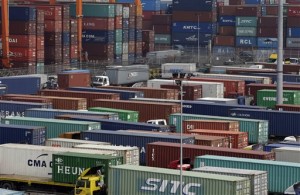PH exporters hit Asean trade barriers
Some members of the Association of Southeast Asian Nations (Asean) are allegedly putting up nontariff barriers (NTBs) to discourage the entry of Philippine exporters and to insulate their domestic industries from the increasing competition in the region, the Philippine Exporters Confederation Inc. said Friday.
Such moves go against the agreements and obligations that had been laid out by the Asean, which is working to have an integrated regional economy called the Asean Economic Community (AEC) by the end of 2015. With most of the tariffs already down to zero, Asean has essentially become a free-trade area except for these non-tariff measures that are reportedly being implemented by some countries.
Philexport quoted Trade Assistant Secretary Ceferino Rodolfo as saying that the Department of Trade and Industry (DTI) was looking at whether the country’s neighbors were complying with their commitments after it got wind of these nontariff measures (NTMs) that other countries have allegedly established.
“We have been receiving reports and we have been acting on this [complaint that] Philippine exporters are finding it harder to access some particular Asean country markets because they have already erected some NTMs and NTBs,” Rodolfo said.
According to Rodolfo, the DTI has begun to conduct bilateral talks with these countries, which were not identified, and to seek recourse through the Asean process by approaching the coordinating committee on the Asean Trade in Goods Agreement.
Article continues after this advertisement“What we have noticed is that the other countries already correspond to our request once they already see that we are about to file formal complaints,” Rodolfo added.
Article continues after this advertisementThe trade official further disclosed that the DTI was also on the lookout for another emerging compliance concern involving non-Asean members that were allegedly leveraging on the regional free-trade agreement.
“Another important compliance issue is in terms of non-Asean parties trying to access Asean markets by circumventing the rules,” he said, citing as an example the case of a South American country that was “trying to get into the Philippine market by using as a transshipment [point] another Asean country.”
The Philippines, for its part, has already complied with its commitments in the area of trade in goods since 2010.
Philippine tariffs on most product lines have been eliminated except for rice, duties for which will be cut to 35 percent from 40 percent, and for sugar, which will be cut to 5 percent in 2015. Other products that still have duties are live chicken, live swine, meat of chicken, meat of swine, sweet potatoes, cassava and corn.
The forthcoming establishment of the AEC is expected to transform the 10 member-states of the Asean, which includes the Philippines, into a single market and production base, to be characterized by the free flow of goods, services, skilled labor, investments and capital. Asean, with its combined population of more than 600 million, is one of the fastest-growing economic regions in the world. It has a combined gross domestic product (GDP) of about $2.3 trillion (as of 2012). It is estimated that Asean total trade to the world is about $2.5 trillion.
